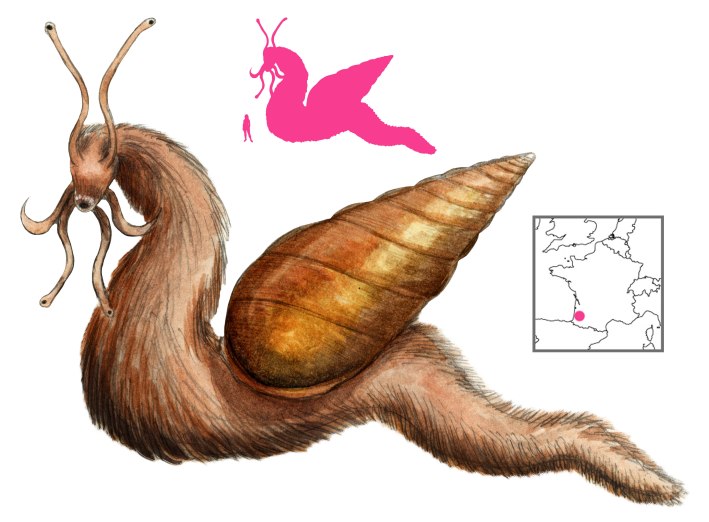Variations: Lou Carcolh (erroneously)

The French town of Hastingues, it is said, is built over an enormous cave honeycombed with entrance tunnels. Deep within that cave dwells the Carcolh (“snail”), also inaccurately known as “lou Carcolh” (“the snail”). The word is itself derived from the Spanish caracol, and does not have any special meaning, as evidenced by the béarnese riddle u houmiot qui s’emporte sa maysou darrè deu cot? Lou carcolh (“A little man who carries his house behind his back? The snail”).
Nobody knows how long the carcolh has lived there, or how old it is. It is a gigantic, slimy, shaggy serpent, with a shell as big as a house, and long prehensile tentacles.
The inhabitants of Hastingues hid their treasures underground before the Spanish invasion. Many have ventured into the cave in search of those treasures, and vanished without a trace. The carcolh does not move much, but its tentacles seize anyone who approaches it, dragging them into its shell to be consumed at leisure. At least one witness saw the carcolh drinking, and managed to escape before it saw him. He then blocked up the tunnel he had entered by, and swore never to return there again.
References
de Charencey, C. (1903) Etymologies Francaises et Provencales. Bulletin de la Société de Linguistique de Paris, v. 12, pp. lix-lxiv.
Foix, V. (1903) Glossaire de la Sorcellerie Landaise. Revue de Gascogne, v. 3, pp. 362-373.
Peyresblanques, J. (1977) Contes et Légendes des Landes. J. Pémartin, Dax.
Rolland, E. (1877) Devinettes ou Enigmes populaires de la France. F. Vieweg, Paris.
Pingback: Pokemon of the Week 87: Sliggoo | ポケモンで英語を学ぶ人の雑記
Pingback: 「ポケモン」VS「パルワールド」キャラの著作権の類似性を検証してみた~裁判所のルールでは侵害?非侵害? | Toreru Media